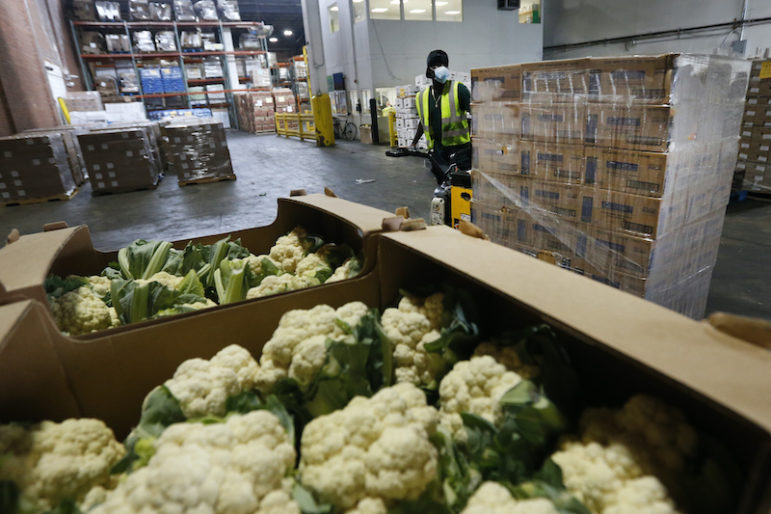One food pantry says it’s seen the number families seeking help at its doors jump from 200 a week to nearly 6,500.

City Harvest, a nonprofit which collects surplus food from farms and restaurants and supplies it to hundreds of soup kitchens and food pantries across the city, has seen food insecurity skyrocket since the start of the COVID-19 pandemic. Between March and August, the organization rescued and delivered a staggering 56 million pounds of food, a 79 percent uptick compared to the same time last year. Between March and June alone, the community food programs that City Harvest works with saw 7 million visits, a more than 20 percent increase from 2019, according to a report released Thursday.
That report details City Harvest’s work in keeping New Yorkers fed over the past six months, and offers a harrowing look at the ongoing hunger crisis wrought by the pandemic: One food pantry the group partners with describes how it’s seen the number families seeking help at its doors jump from 200 a week to nearly 6,500. Another City Harvest staffer explained how the line for one food pantry outside a Bronx church can now run 500 to 600-people deep.
“I’ve seen young kids on the line there, around eight to 12 years old,” the staffer, a City Harvest delivery driver, explains. “I see them standing, sitting on the ground because of the long lines.”
And food insecurity won’t be going away anytime soon, advocates say, even as New York continues to reopen. In July, the city’s unemployment rate still hovered just under 20 percent. City Harvest says it’s increased the amount of food it picks up and delivers every month since March, and aims to more than double its annual amount by the end of this fiscal year, citing projections that say the city’s food insecurity rate is expected to increase by 38 percent compared to pre-pandemic figures.
“New York City’s food insecurity crisis is getting even worse,” says Racine Droz, director of donor relations and supply chain management at City Harvest, who says hungers was already a crisis in New York even before the pandemic. “Each month we’re being told that new agencies are in need of more food.”
While the organization has weathered periods of great need like this before — the report sites post-9/11 and Hurricane Sandy among them — the coronavirus poses unique challenges. It’s not confined to a geographic area or even just this city, has majorly disrupted the food supply chain and put more than a million city residents out of work.
The hunger crisis has been compounded by the fact that many community food programs in New York have been forced to shutter as a result of the pandemic, either due to insufficient staffing levels or funding cuts spurred by the economic crisis. City Harvest opened 32 emergency distribution sites in hard-hit neighborhoods to help plug those gaps, the report notes.
While some food pantries and soup kitchens have reopened since the height of the outbreak, many remain shuttered, Droz says. Those that are open often struggle to pay for the things needed to operate during a pandemic, such as Personal Protective Equipment (PPE) and hand sanitizer.
To meet the need ahead, Droz says they would like to see the continuation of government initiatives like the USDA’s Farm to Families Food Box program and the state’s Nourish New York initiative, both of which fund the purchase of agricultural products from farmers and supply them to emergency food providers.
City Harvest and other organizations are also calling for Congress to pass the stalled HEROES Act, the second federal coronavirus relief package, which would increase SNAP recipients’ benefits as well as extend the $600 in weekly extra unemployment benefits that ran out at the end of July.









